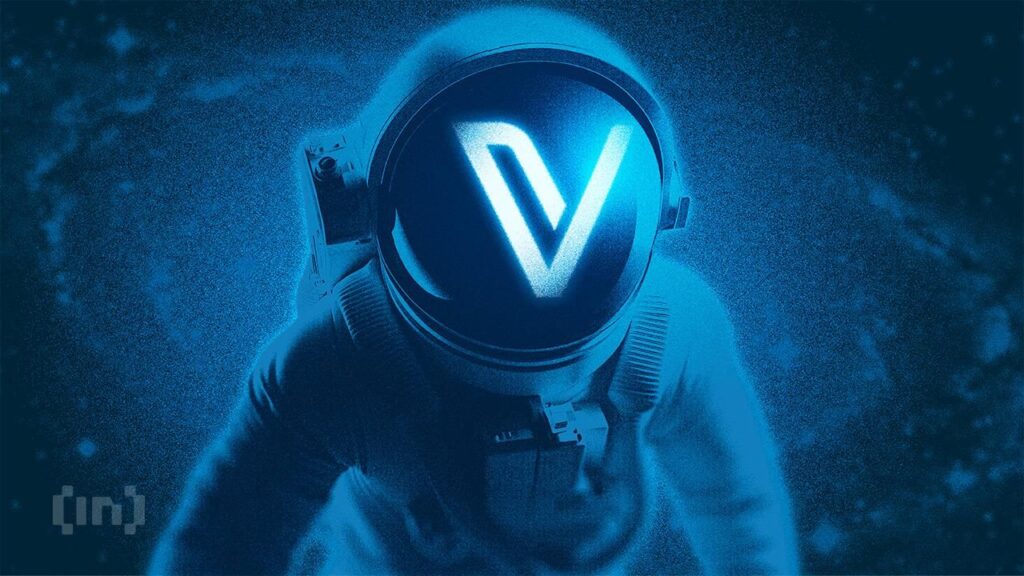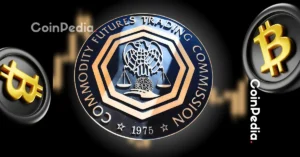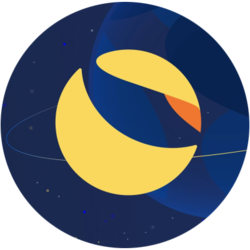A Series of Major VeChainThor Upgrades

Editorial Note: The following content does not reflect the views or opinions of BeInCrypto. It is provided for informational purposes only and should not be interpreted as financial advice. Please conduct your own research before making any investment decisions.
In increasing numbers, real-world businesses and Web 2.0 services are adopting blockchain technologies, developing decentralized applications (dApps) and transitioning to Web 3.0. This technological shift offers significant advantages and brings value adding benefits, such as decentralization, tokenization, transparent incentivization models, fair governance, and more.
But do blockchains exist today that can overcome the current challenges blocking mass adoption — such as scalability, technical complexity, and the resulting user-unfriendly functionality?
In this overview, we’ll consider the VeChainThor layer-1 blockchain (the core of the VeChain ecosystem) and explore one of its most important upgrade series — VeChain Renaissance — which may play a crucial role in enabling real mass adoption.
VeChain History
VeChain is a blockchain ecosystem that was co-founded in 2015 by Sunny Lu, who still serves as CEO. With an extensive professional history, including experience as CIO of Louis Vuitton China and in Bitcoin mining from 2013, he recognized the powerful potential of smart contracts and their ability to solve real-world economic and business challenges.
After two years operating as a private consortium chain, the VeChain Foundation was launched in 2017, and the core of the ecosystem — the VeChainThor blockchain — was launched in 2018, with its genesis block mined in June of that year. The blockchain was purpose-built with features that solved many of the contemporary challenges facing its client network, including tools that paid gas fees on behalf of business users, transaction batching to make hashing data more efficient, and eventually, ToolChain, an off-the shelf product designed to help businesses spin up dApps easily.
In the years that followed, the blockchain continued to innovate, launching new products including the VeWorld crypto wallet and VeChain’s ‘Web3 App Store’ VeBetter – an incentivized, community-driven platform that rewards actions around sustainability. Today, VeChain stands as a truly underrated leader in the Real-World Asset (RWA) space, with products that are tokenizing millions of user actions through various dApps, demonstrating real-world adoption of blockchain technology and its usage on a daily basis.
What is VeChainThor?
VeChainThor is a layer-1 blockchain whose core mission is to enable practical, widespread global adoption of blockchain technology. One of the main strategies for achieving this goal currently centers on the VeBetter ecosystem, a key product that brings together various X-2-Earn dApps with real-world use applications that reward users for participation. Notably, two of these dApps have already surpassed 1 million users. dApps, in some way, tackle the UN’s SDGs, ranging from health to waste reduction, to sustainable transport. The goal is to build a lifestyle platform, where users can use VeBetter apps throughout the day, earning rewards for making the world better, in some way.
VeChainThor currently operates on the Proof of Authority (PoA) 2.0 consensus algorithm, which relies on a pre-selected set of trusted and reputable validators to process transaction blocks. As part of the VeChain Renaissance roadmap, VeChainThor’s consensus mechanism will be migrated to a WDPoS model, opening up the network and enhancing its decentralization and security, while creating a deflationary tokenomic model via modifications to the VET <> VTHO dynamic.
This approach enables VeChainThor to achieve high throughput, with finality achieved after one epoch (180 blocks). Testing showed its capacity to handle up to 10,000 transactions per second, as well as high scalability. What also sets VeChainThor apart from most other blockchains is its uninterrupted operation. Since 2018, the network has maintained 100% uptime without any interruptions, which is critically important for real-world adoption and operation of large-scale dApps.
VeChainThor also offers multiple important features that significantly improve onboarding and support broader adoption:
Controllable transaction lifecycle: With the BlockRef and Expiration fields within the transaction model, users can set the time when a transaction is processed or expired if it has not yet been included in a block, preventing user funds getting trapped in the memepool.
Clauses (Multi-Task Transaction): Clauses are an additional data structure within the VeChainThor transaction model which enables a transaction to carry multiple payloads within a single transaction. This lets users batch hundreds of transactions in a single ‘master transaction’, increasing efficiency and saving costs.
Fee delegation: Allow users to use dApps and make transactions without owning any cryptocurrency. For example, you can simply install a wallet and start using a dApp right away — without needing to buy crypto, transfer it to your wallet, or deal with any extra steps.
Transaction dependency: Set dependencies on a transaction to ensure the execution order meets the business need, transactions that specify a dependency will not be executed until the required transaction is processed. This can ensure either all transactions succeed, or none are executed, preventing important data loss.
VeChainThor Token Model
VeChain uses a unique two-token model that involves two separate tokens, each with its own function. This system makes transaction fees predictable, adjustable, and less affected by market volatility, which is a crucial factor for applications. Let’s take a closer look at the VeChainThor tokens:
VET: The native utility token, used for governance (VET stakers can participate in voting on ecosystem changes), staking, value storage, generating VTHO (gas token) and accessing ecosystem services.
VTHO: The gas token used to pay for transactions on the network. Currently, it is automatically generated for all VET holders, but after upcoming updates, it will be generated exclusively through VET staking.
What is the VeChain Renaissance?
The VeChain Renaissance is a series of major upgrades to the VeChainThor blockchain, scheduled throughout 2025 and rolled out in three key phases: Galactica, Hayabusa, and Interstellar. Each upgrade will be implemented through governance voting.
The Renaissance introduces several important innovations aimed at improving staking and increasing rewards through a new tokenomics and distribution model, a new staking platform, StarGate, enabling full EVM and JSON RPC compatibility, and boosting decentralization through an upgraded consensus algorithm. We’ll explore each of these upgrades in more detail, phase by phase, in chronological order.
Galactica Phase
The first phase of the VeChain Renaissance is now live on mainnet as of July 1, 2025, following a testnet period, with all upgrades successfully merged with VeChainThor.
Dynamic Fee Market with 100% VTHO Burn
With this upgrade, VeChainThor significantly enhances its security by introducing dynamic gas fees that adjust based on network load. This mechanism helps prevent spam attacks that could otherwise throttle the network — for example, by flooding it with thousands of meaningless microtransactions to delay or block the network’s continuous operation.
Additionally, a network adjustment has been introduced for the VTHO token, where 100% of the transaction fees are now burned (VTHO serves as the gas payment token). Moreover, users can speed up their transactions by paying additional fees to validators. This helps reduce the supply of VTHO tokens, creating a deflationary environment.
Typed Transactions
With this upgrade, VeChainThor can seamlessly identify and process different types of transactions using a new standardized transaction format. This modular design lets the network grow and improve without disrupting current ecosystem operations.
Shanghai EVM Upgrade
Developers can now easily migrate various popular EVM toolkits and dApps to VeChainThor and benefit from unique features such as the two-token model, fee delegation and multi-clause transactions. This also supports VeChain’s broader goal of mass adoption, as the Ethereum ecosystem is one of the largest in the industry — with a vast number of developers and users.
Hayabusa Phase
The second phase of the Hayabusa upgrade began rolling out on July 1st, with full mainnet integration planned by end Q4 2025. This phase includes several updates that are already delivering visible benefits for users.
StarGate: New Staking Platform
StarGate is a staking platform launched on July 1st, featuring a unique NFT-based staking collateral mechanism. It serves as the native platform for users to stake VET (the utility token of VeChainThor) and mint an NFT in return. This NFT represents the staked VET collateral and acts as a delegation instrument. Simply put, holders can become delegators, participating in network operations and earning rewards in VTHO tokens.
Note: The validator delegation mechanism is not yet live and is planned for activation by the end of December 2025.
The staking system itself has also been enhanced and made more decentralized through the introduction of multiple new staking tiers. Depending on the selected tier, delegators receive a multiplier on their staking rewards:
Delegator VeThor X (600,000 VET): 2.0× staking rewards multiplier
Delegator Strength X (1,600,000 VET): 3.0× multiplier
Delegator Thunder X (5,600,000 VET): 4.0× multiplier
Delegator Mjolnir X (15,600,000 VET): 5.0× multiplier
Delegator Strength (1,000,000 VET): 1.5 multiplier, capped at 2,500 NFTs (max 2.5 billion VET staked)
Delegator Thunder (5,000,000 VET): 2.5 multiplier, limited to 300 NFTs (max 1.5 billion VET)
Delegator Mjolnir (15,000,000 VET): 3.5 multiplier, limited to 100 NFTs (max 1.5 billion VET)
As introduced in the VeChain Renaissance, three new accessible tiers are now live, significantly lowering the barrier for beginner users to entry and expanding the potential delegator base:
Delegator Dawn Node (10,000 VET): 1.0 multiplier, capped at 500,000 nodes (max 5.0 billion VET)
Delegator Lightning Node (50,000 VET): 1.15 multiplier, limited to 100,000 nodes (max 5.0 billion VET)
Delegator Flash Node (200,000 VET): 1.3 multiplier, limited to 25,000 nodes (max 5.0 billion VET)
In addition to its technical advantages, StarGate also aligns with important regulatory developments. This includes compliance with recent US rulings on Proof of Stake (PoS) networks and the European Union’s Markets in Crypto-Assets (MiCAR) regulation, a regulation rule designed to regulate crypto assets and protect investors. Achieving MiCAR compliance for both VET and VTHO strengthens VeChain’s legal standing and transparency. As a result, StarGate also serves as a platform for onboarding institutional participants, who may become validators on the network.
Early Bird Staking Program with 5.48 Billion VTHO in Rewards
Alongside the standard staking rewards tied to network participation, VeChain launched a 6-month Early Bird Staking Program starting July 1st. During this period, a total of 5.48 billion VTHO (~$11 million+) will be distributed as additional rewards to early participants. No additional actions are needed to participate — a tier simply needs to be selected on StarGate, and a minimum of 10,000 VET staked.
Core Tokenomics Upgrades
Under the VeChain Renaissance, some major changes are coming to VeChain’s tokenomic model. The native VeChain token, VET, retains its utilities, with one key change: VET tokens staked as Economic/X Nodes can now be used as collateral to mint new “Delegator” Staking NFTs. These NFTs can then be delegated to Validator Nodes to earn a share of block rewards.
The biggest upcoming changes will affect the VTHO token. Once the Hayabusa stage of VeChain Renaissance merges with mainnet, VTHO, currently generated automatically by all VET tokens, will only be created by VET tokens being staked, with VTHO issuance linked to the total amount of VET staked.This will significantly reduce inflation of VTHO, which, alongside increased consumption via the gas fee market, and 100% base fee burning, help to support the VeChain ecosystem’s long-term value through deflationary tokenomics.
Consensus Mechanism Updates: Weighted Delegated Proof of Stake (WDPoS)
VeChainThor currently operates on the Proof of Authority 2.0 (PoA 2.0) consensus mechanism, which has proven highly effective—maintaining 100% uptime since its launch in 2018 with no network interruptions. However, further enhancements are planned. The network is in the process of transitioning to a Weighted Delegated Proof of Stake (WDPoS) model, which will be fully activated after the Hayabusa phase is merged into mainnet. This transition aims to significantly increase the level of decentralization within the blockchain, as it enables VET stakers to delegate NFTs that represent staked VET as collateral, allowing broader participation in validator selection and overall network governance.
Interstellar Phase
Interstellar is the final, third phase in the series of major Renaissance upgrades for VeChainThor, targeted for the last quarter of 2025.
Full Compatibility With The Ethereum Ecosystem
The update will add full JSON-RPC support and complete EVM compatibility, enabling VeChainThor to work seamlessly with all Ethereum tools and infrastructure. This will open the door for thousands of developers to build on and migrate dApps to VeChainThor, fostering strong cross-chain communication with other EVM-compatible blockchains and protocols.
Importantly, this can attract a large number of users from across the crypto industry and position VeChainThor to achieve its ambitious goal of reaching billions of users. To do so, effective communication and interoperability with multiple ecosystems and chains is essential.
Conclusion: The VeChain Renaissance Impact on the VeChain Ecosystem and Its Influence on RWAs and Web3
VeChainThor has been a significant player in the blockchain space since 2018, evolving into a robust ecosystem where some dApps attract millions of users. Now, in 2025, it is undergoing a series of major Renaissance upgrades that substantially enhance both the network’s technical capabilities and its economic model, introducing numerous features designed to attract a broad user base and transform Web 2 services from various industries into Web3 applications.
VeChain’s advancements and adoption through its VeBetter platform also position it to have a meaningful influence on Real-World Assets (RWAs) and the broader Web3 landscape, bridging traditional industries with decentralized technologies while adhering to all necessary standards, bolstered by the VeChain Renaissance upgrades. This approach significantly strengthens VeChain as one of the leading blockchain ecosystems capable of driving mass adoption.
Discover more about VeChain by following the official links:
Website | X | Discord | Docs | StarGate
Disclaimer
This article is sponsored content and does not represent the views or opinions of BeInCrypto. While we adhere to the Trust Project guidelines for unbiased and transparent reporting, this content is created by a third party and is intended for promotional purposes. Readers are advised to verify information independently and consult with a professional before making decisions based on this sponsored content. Please note that our Terms and Conditions, Privacy Policy, and Disclaimers have been updated.















